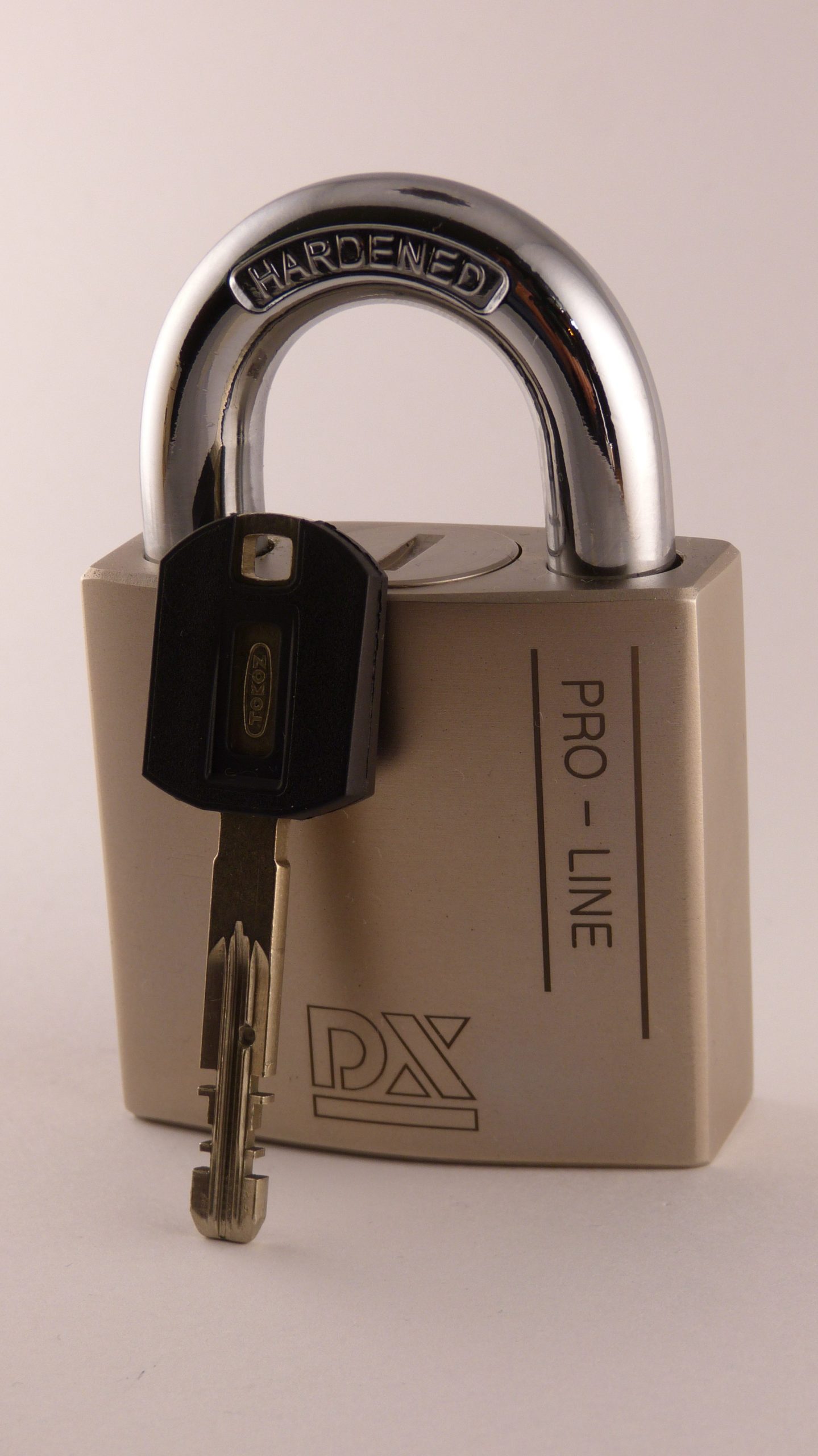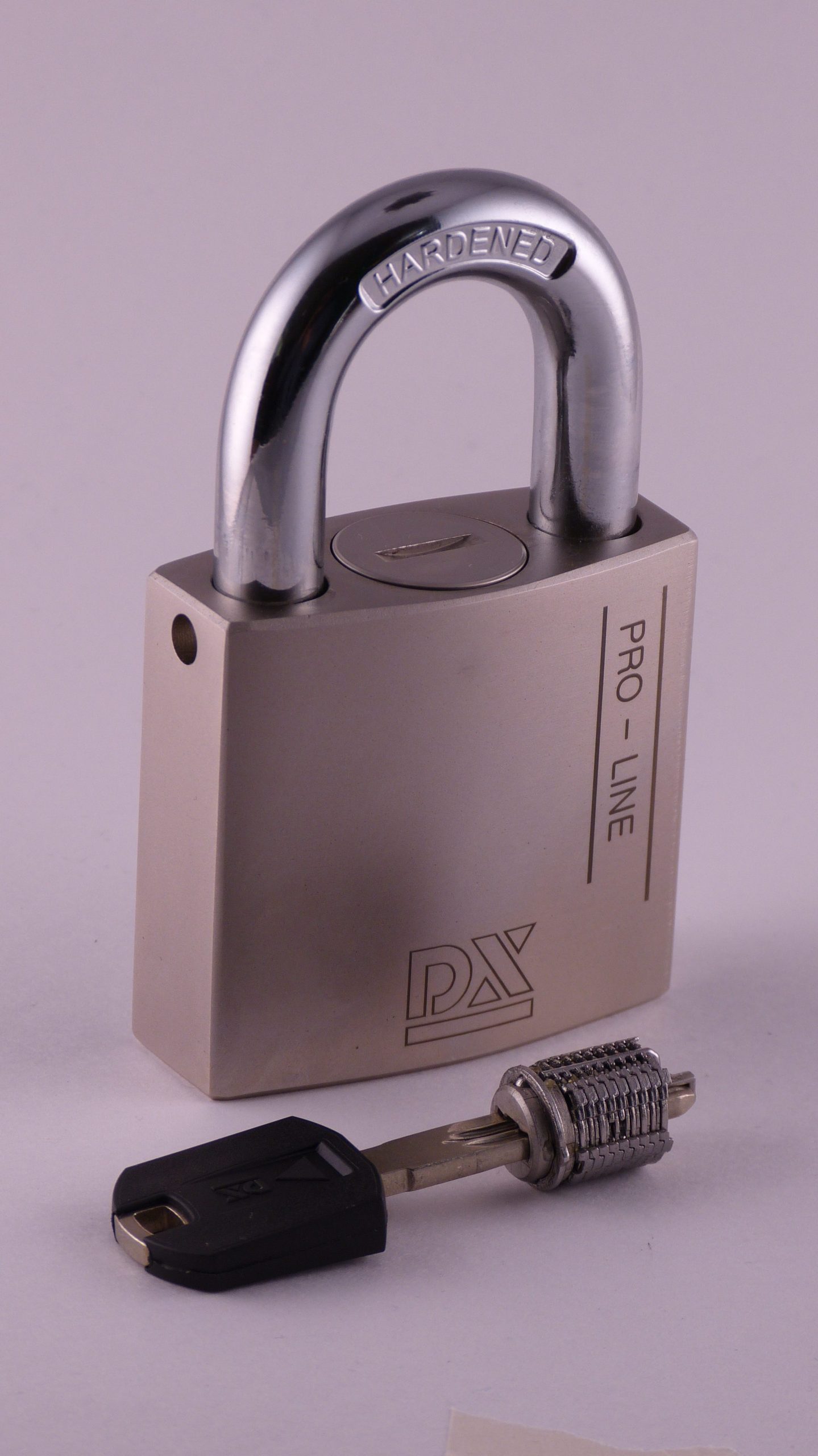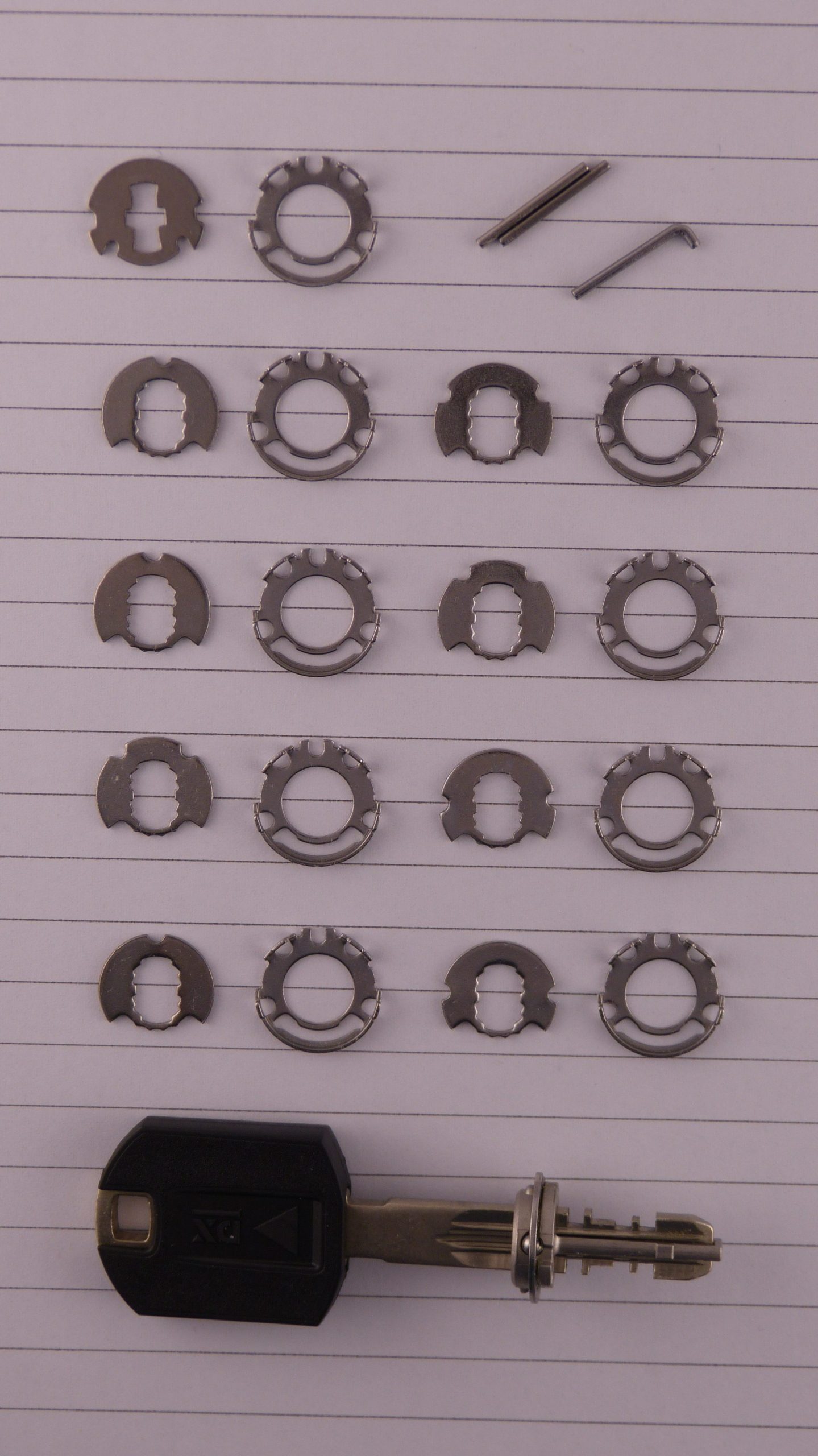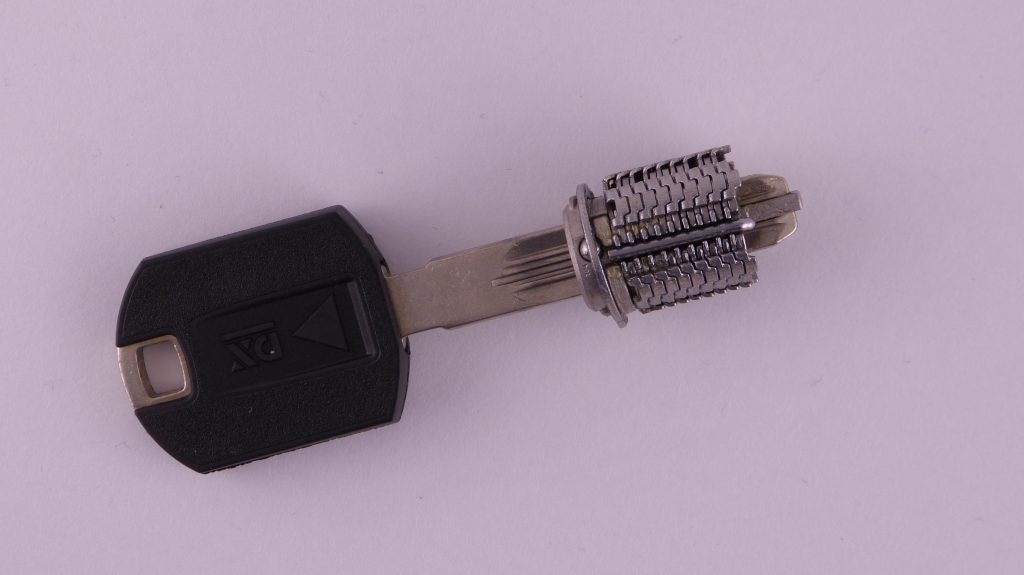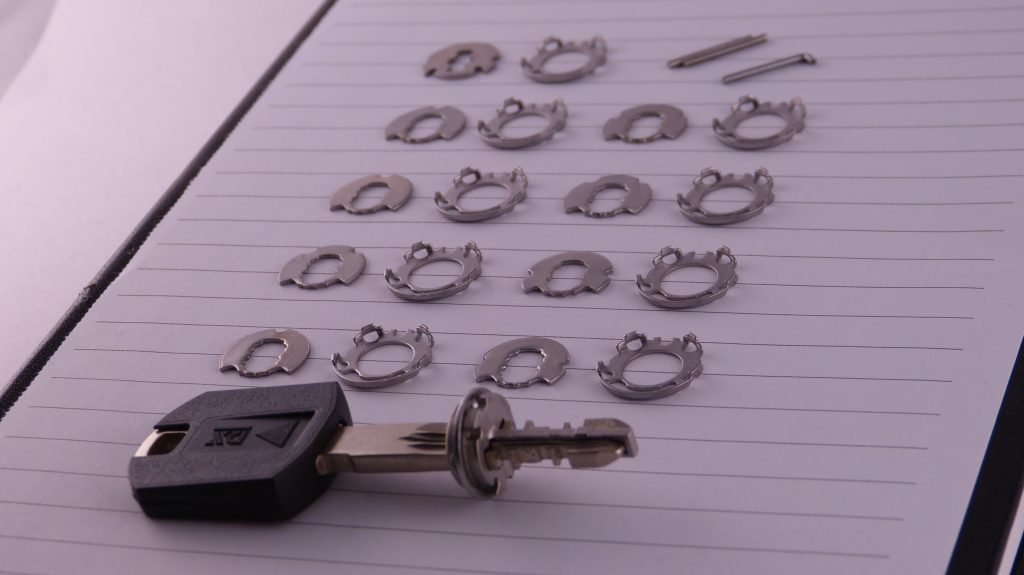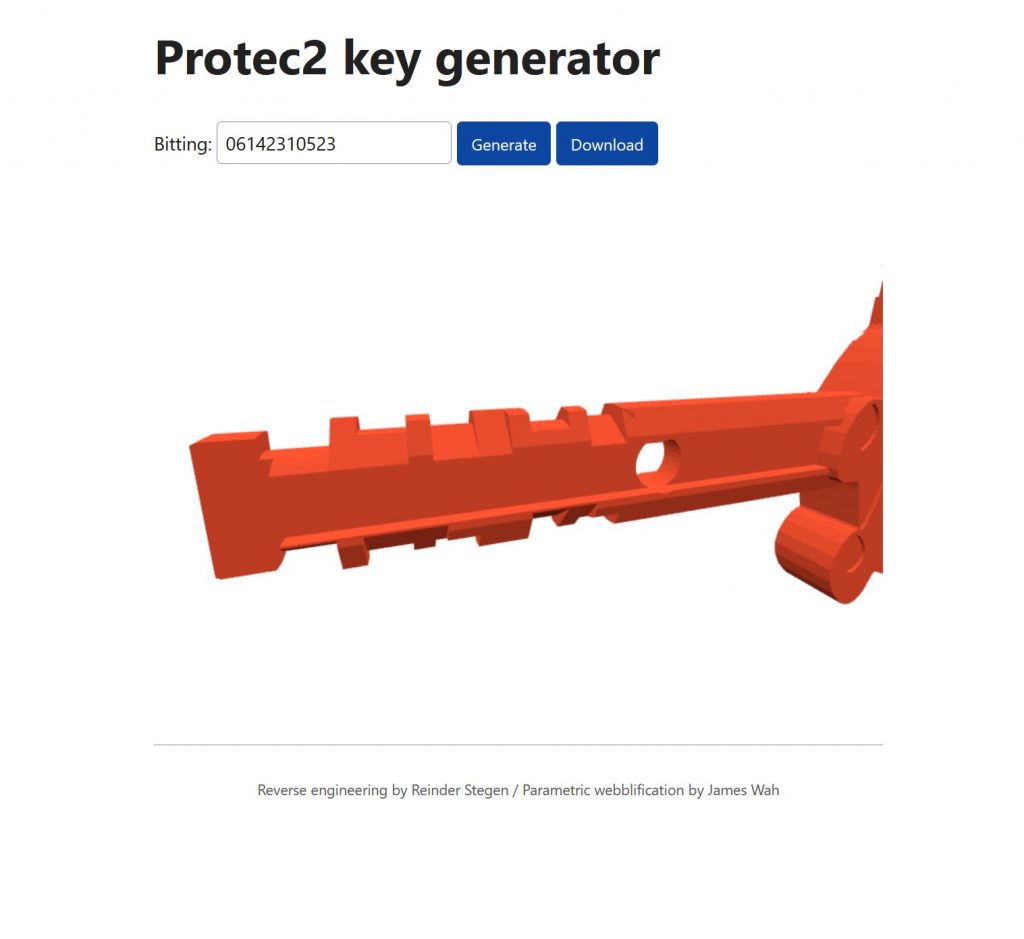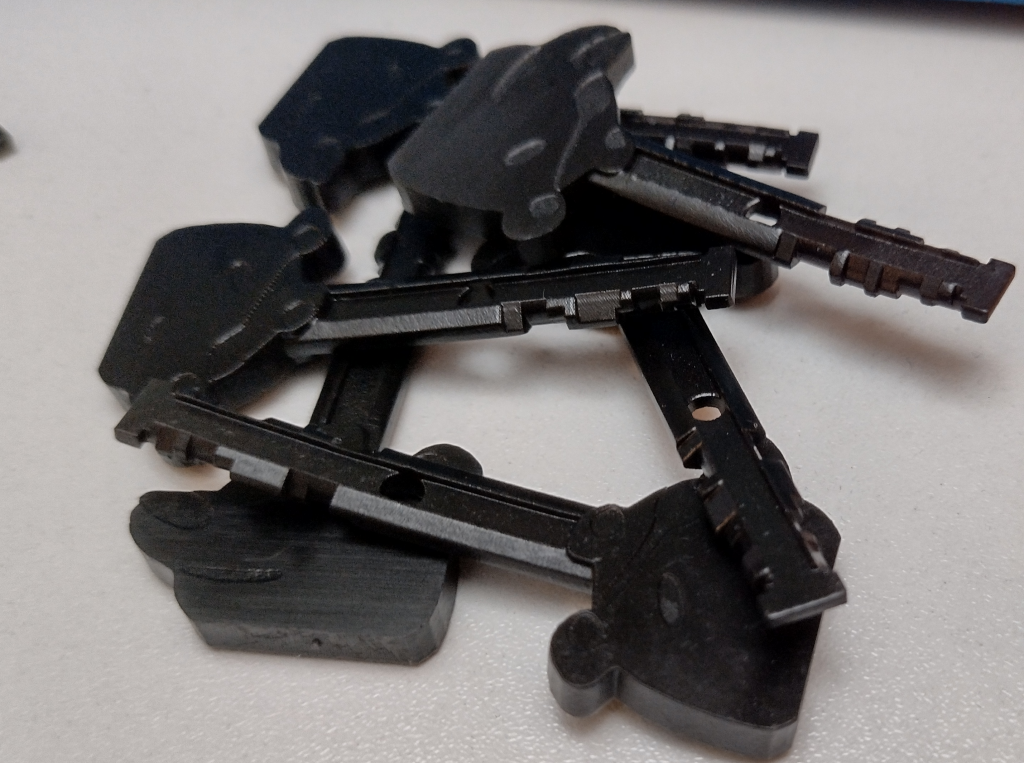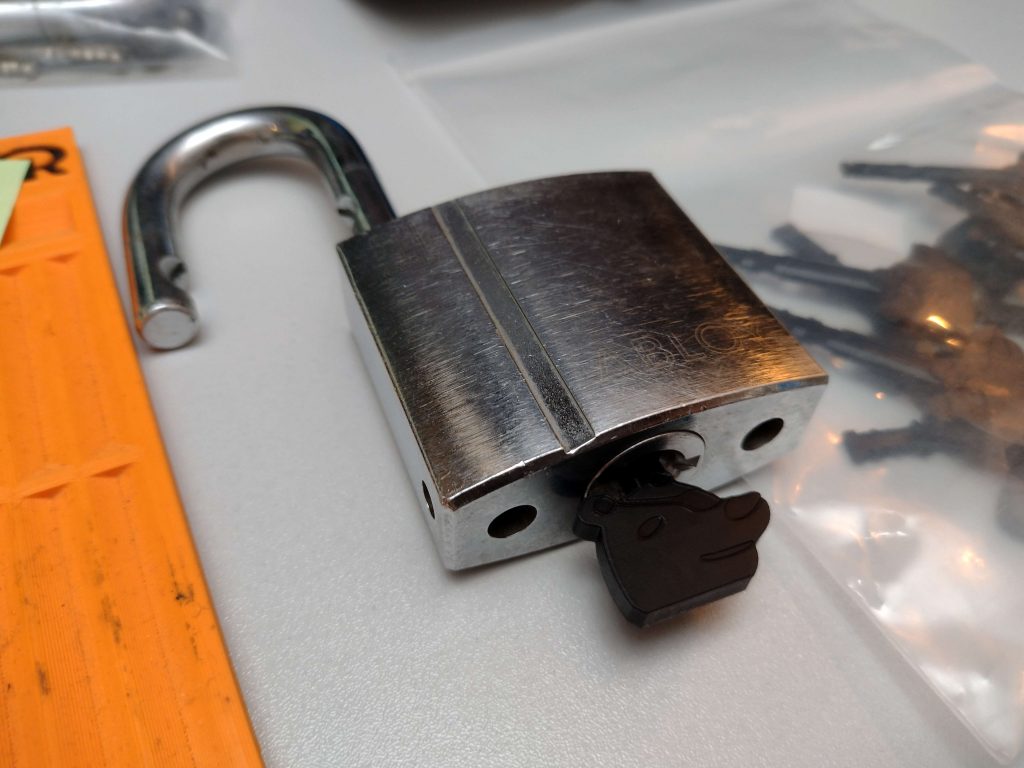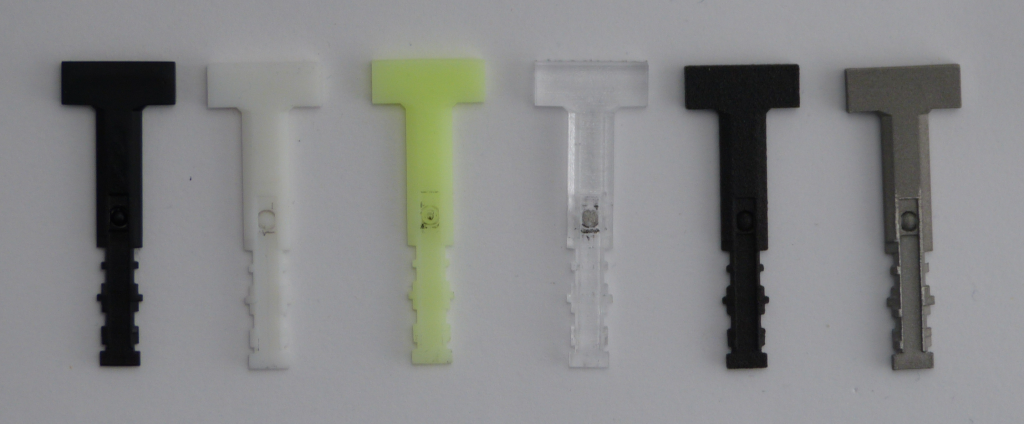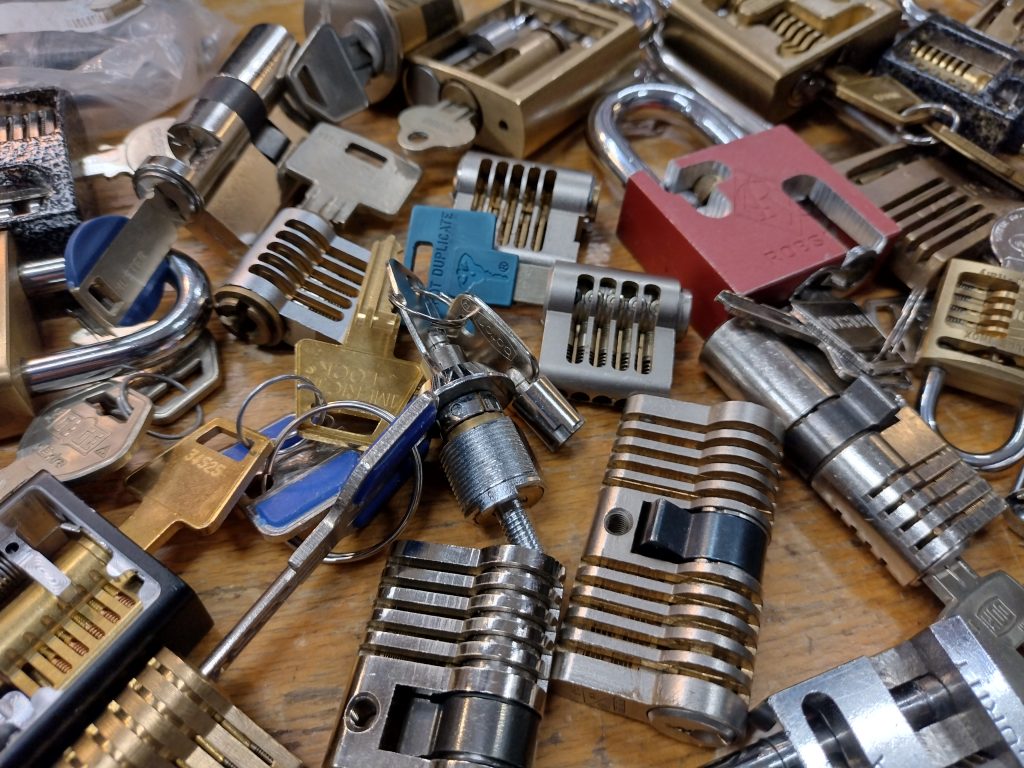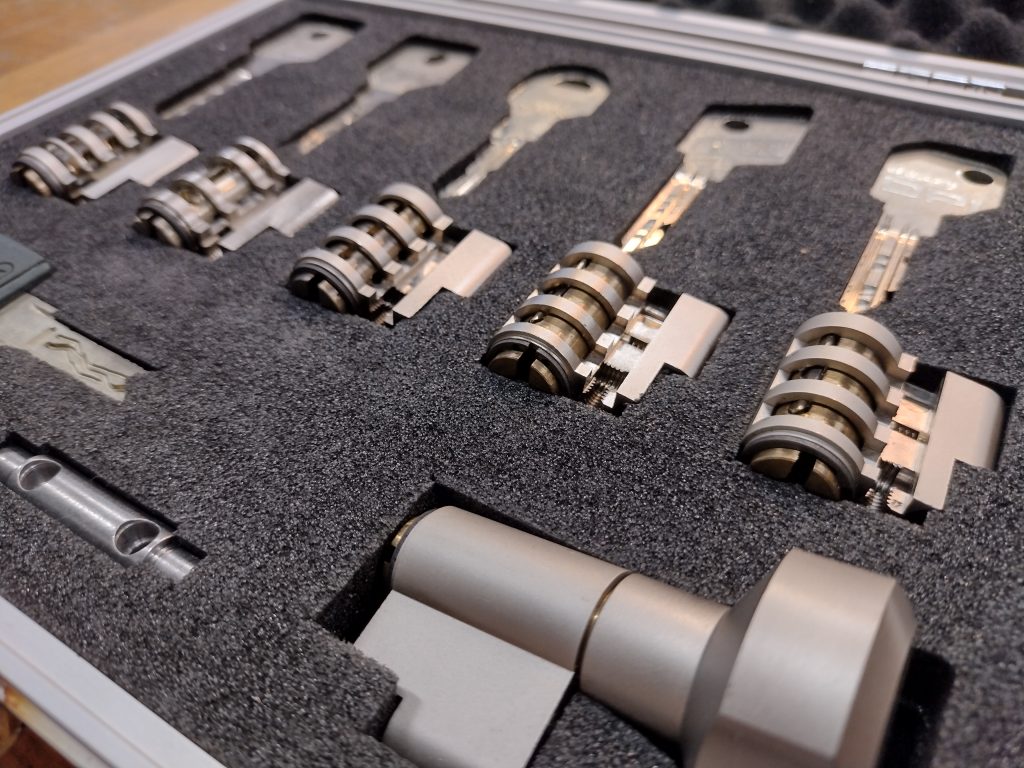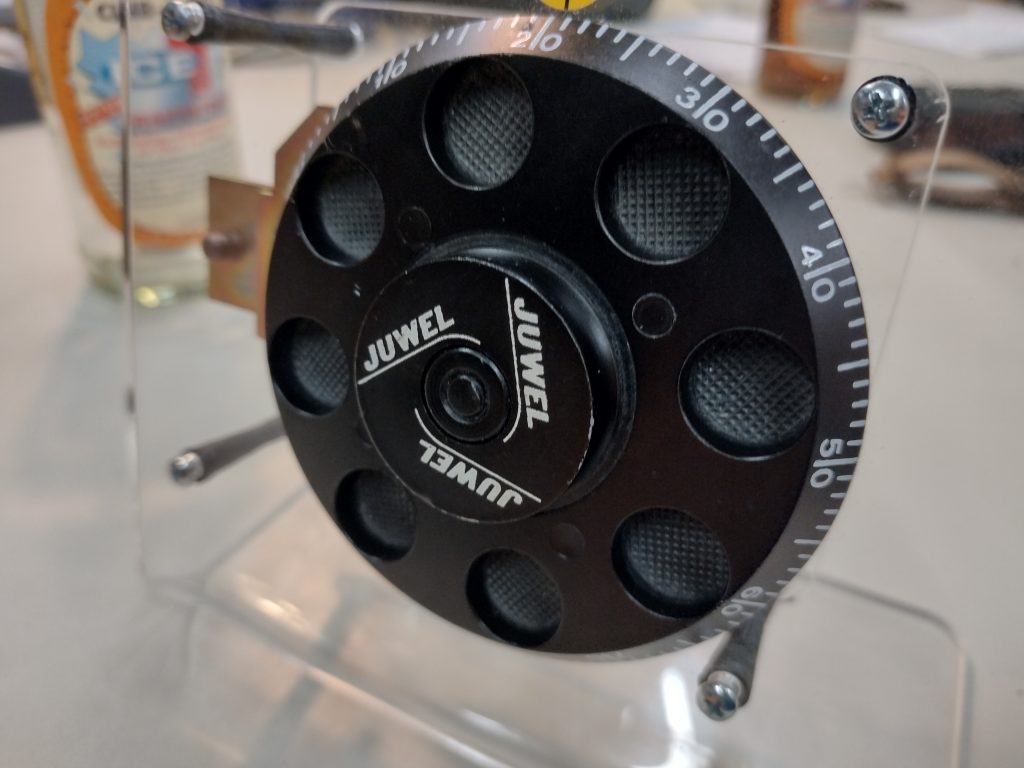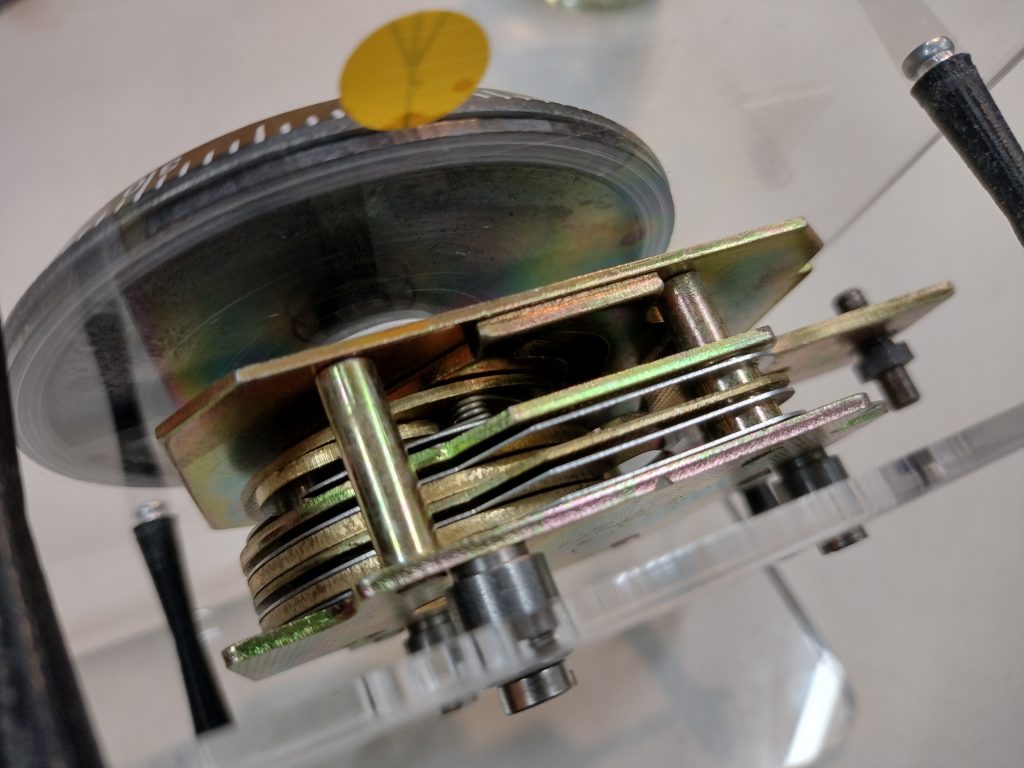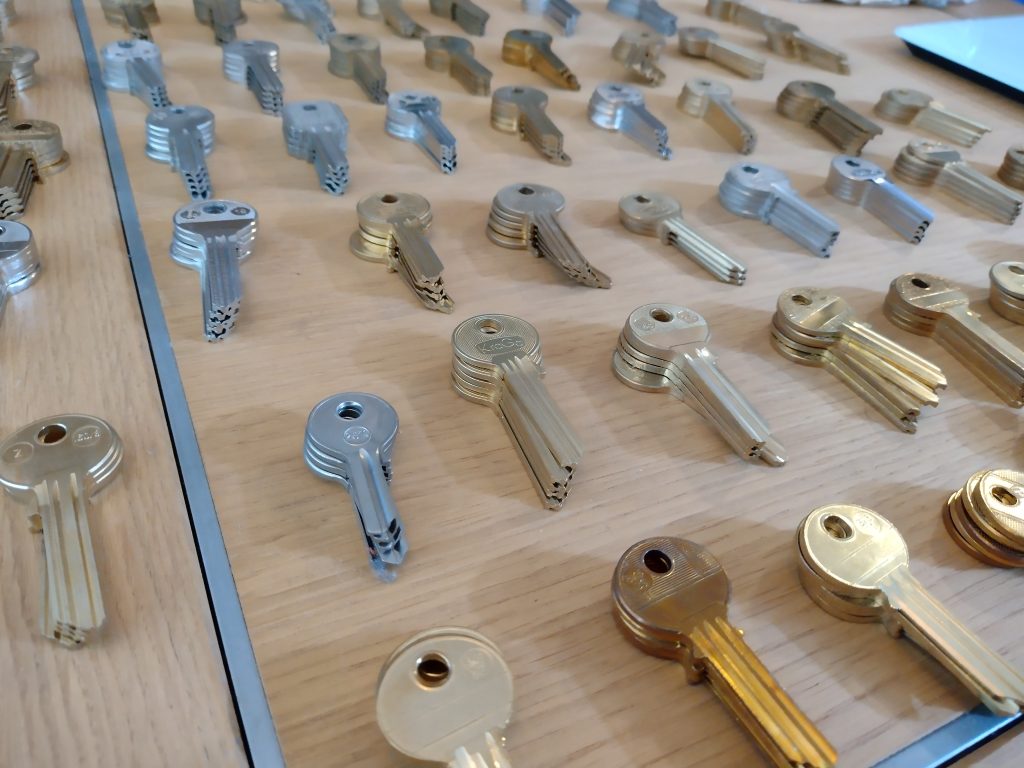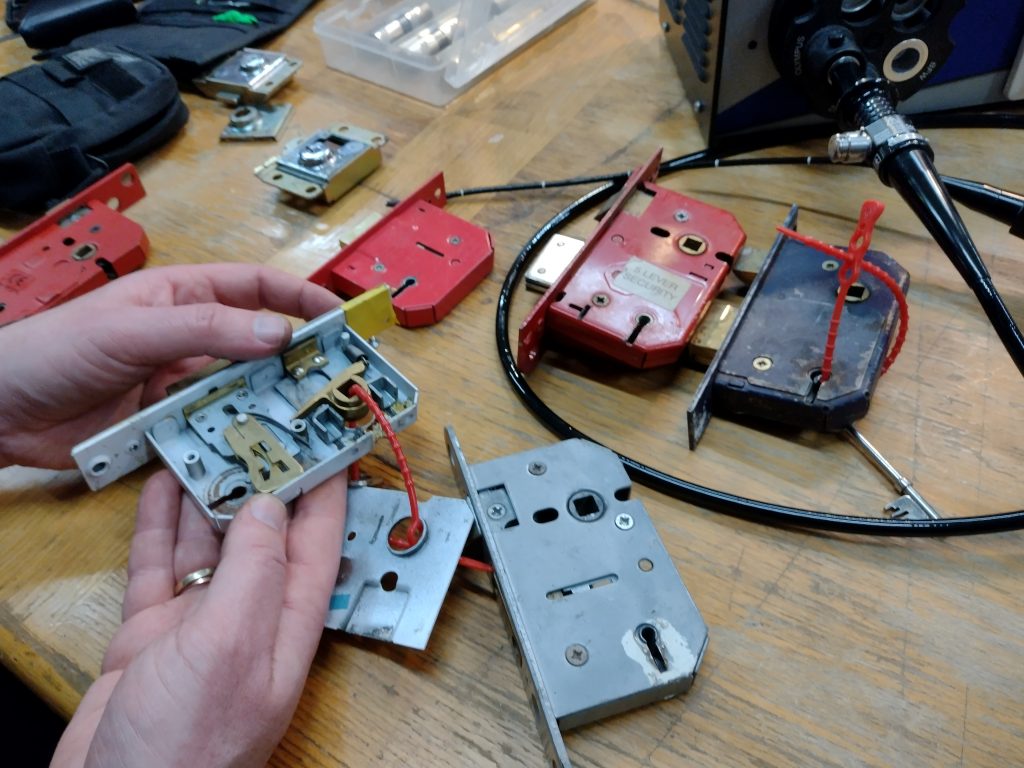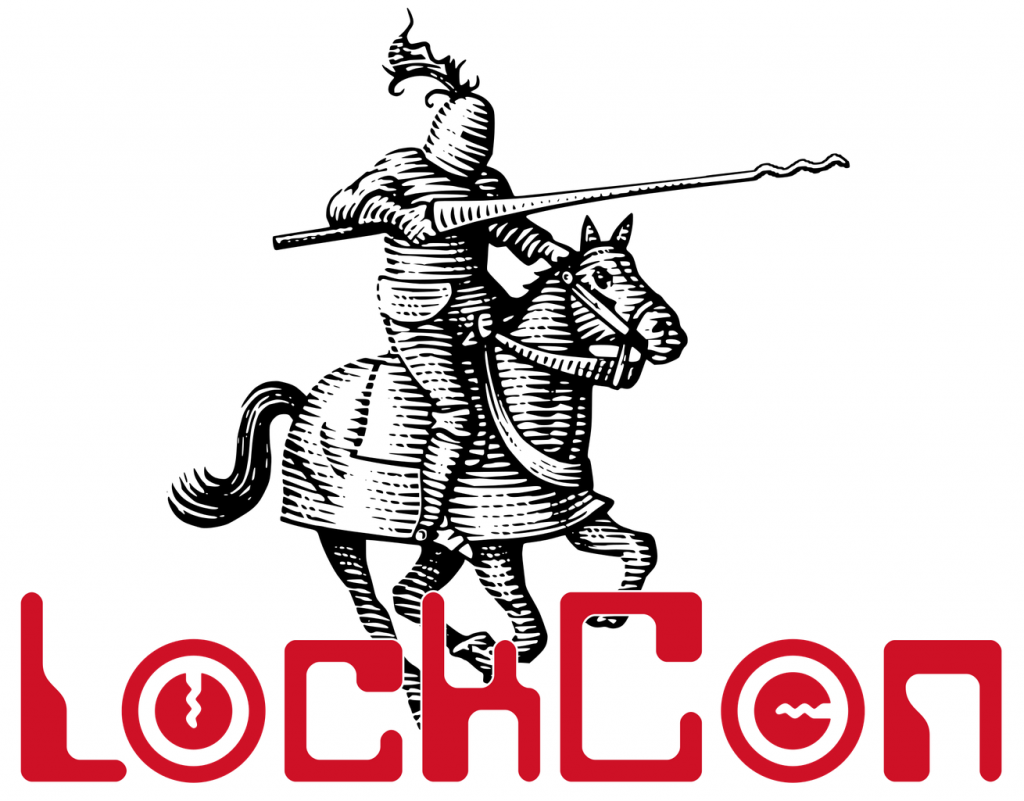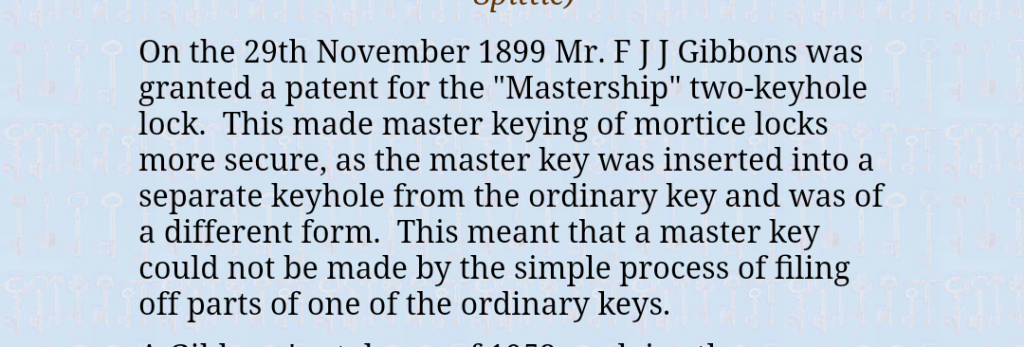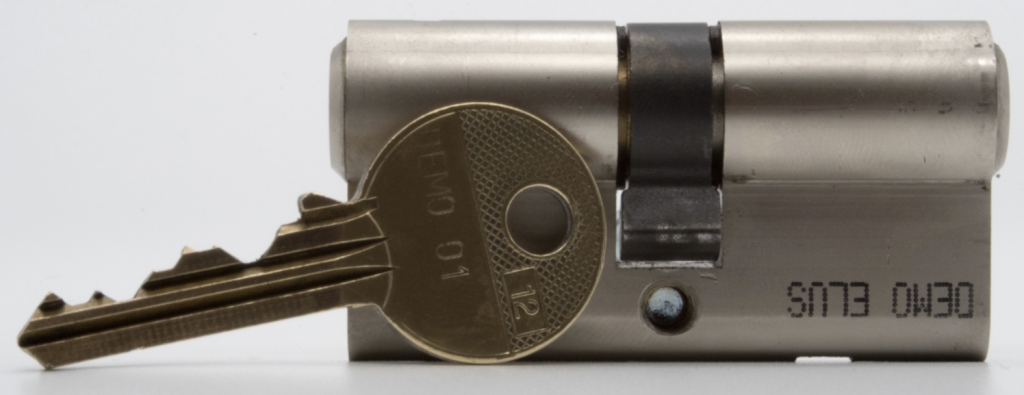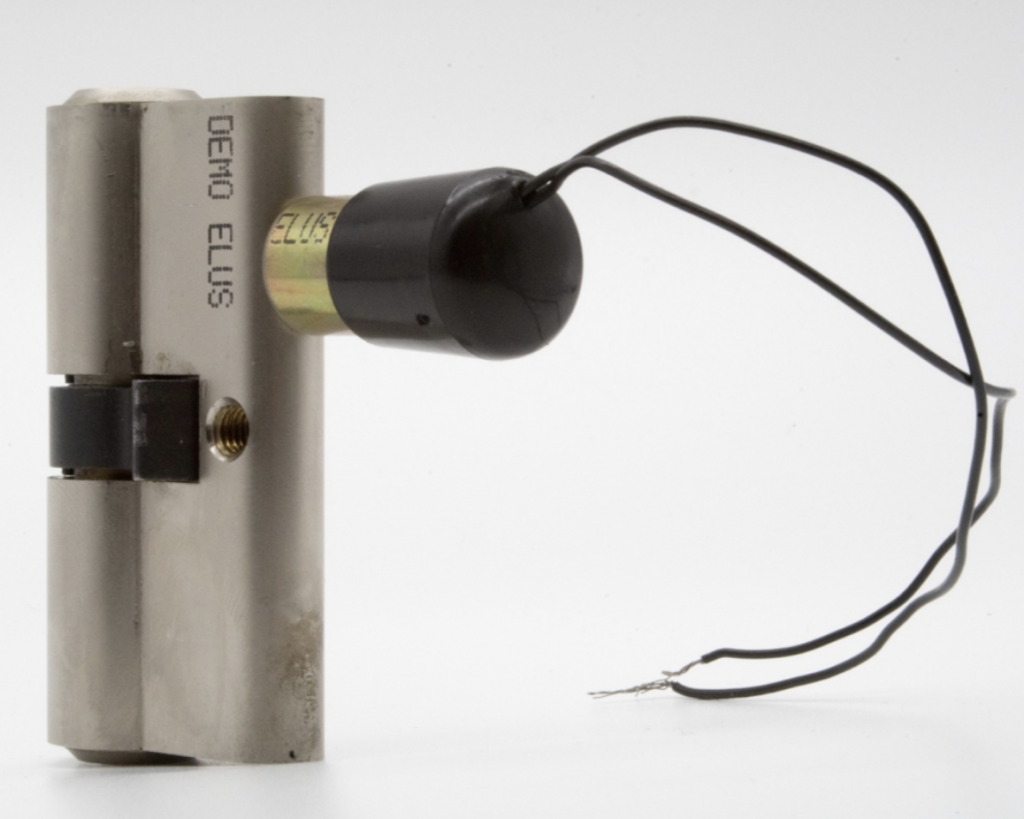From 12 to 15 October 2023, Toool organized LockCon, a Locksport conference with attendees from Europe and the USA. Here is a recap of this year’s event at the beautiful Westcord Hotel Veluwe in Garderen.
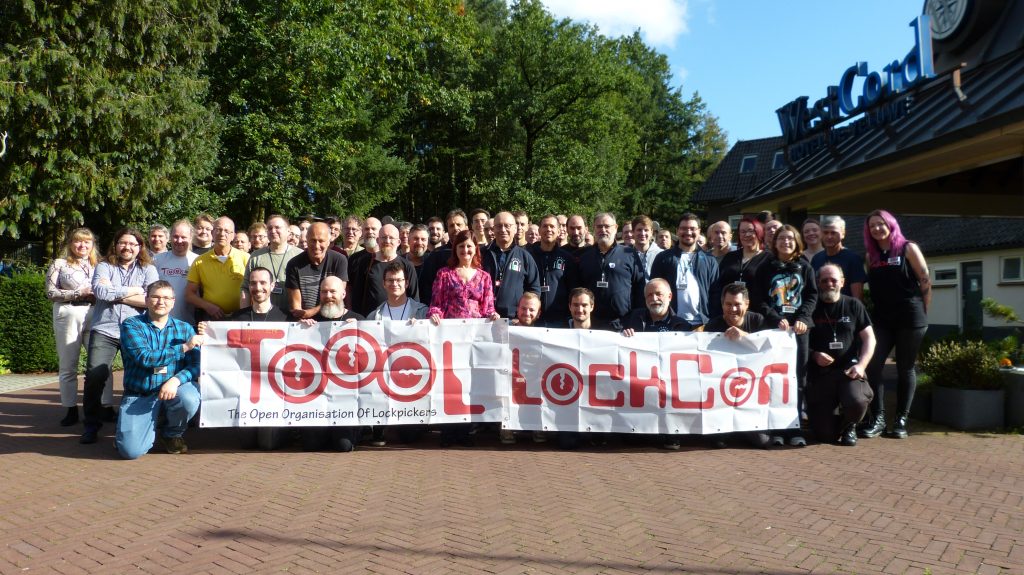
On a warm late summer day, we started LockCon. After check-in and setup at the venue, the first of guests already arrived. It was great to meet so many friends again. On Thursday evening, we dined at a restaurant at walking distance from the venue, after which we set up the conference hall for the talks and competitions. We protected the tables with stucco runner, as locks and vices can otherwise easily damage furniture. The rest of the evening was used to meet new people, catch up with friends and discuss lock topics at the hotel bar.
After a first night of not enough sleep, we had breakfast at the venue’s restaurant. The food selection was nice, from the usual bread to fruit salad, yogurt, scrambled egg, and poffertjes! Jos opened the conference by highlighting achievements of the community, including the LPU belt explorer picture archive and Locksport. Jos thanked the sponsors, Abus, Multipick, Sparrows, and Dulimex, as well as the LockCon team, who make LockCon possible.
The first talk was by Walter, who introduced the Evva Elus electromechanical temporary access function lock, and updated the attendees on the Anker 3800 research. It’s incredible what we can do with a bit of dedication and a 3d printer. There was an active debate if Anker 3800 magnets can be overlifted.
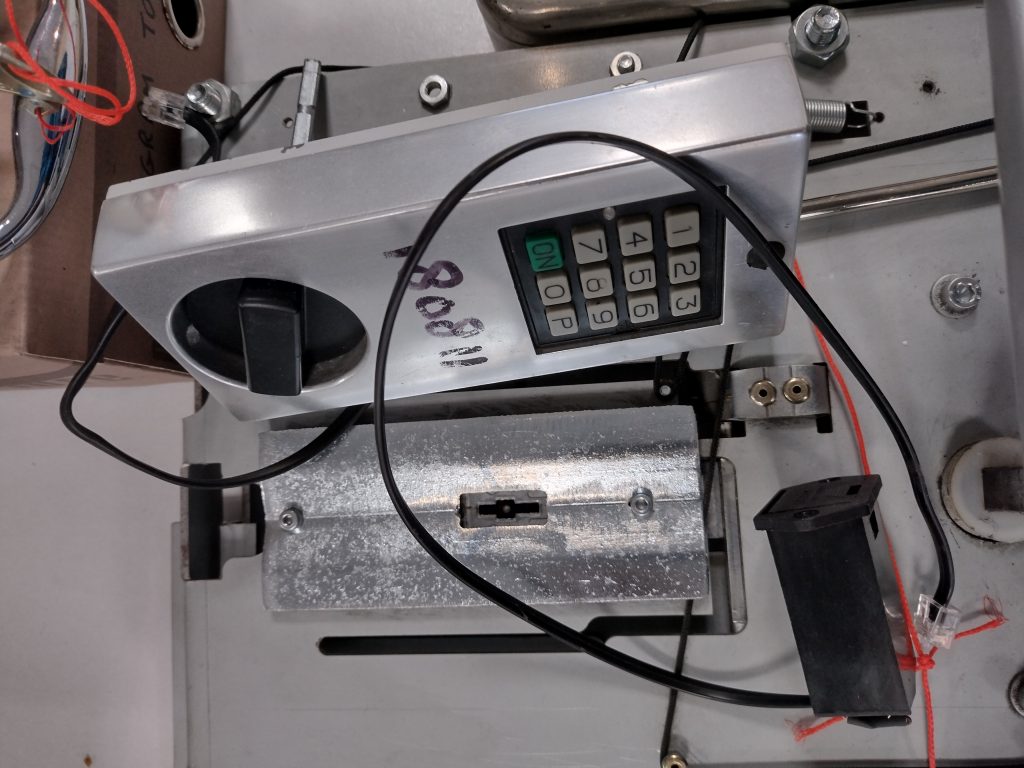
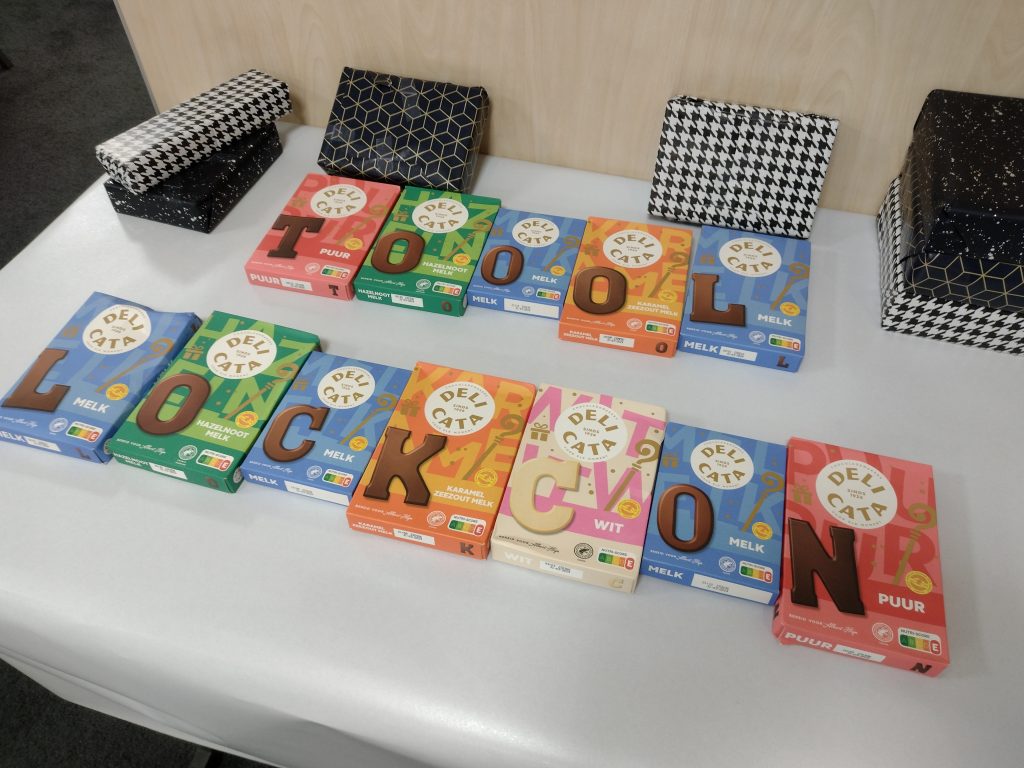
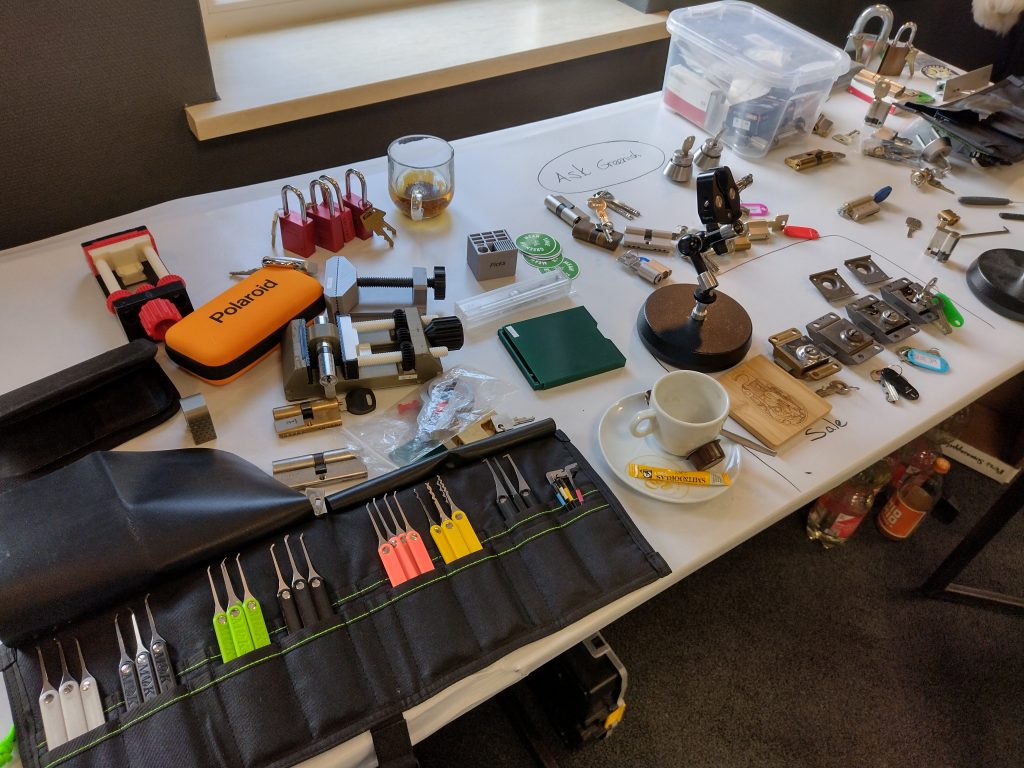
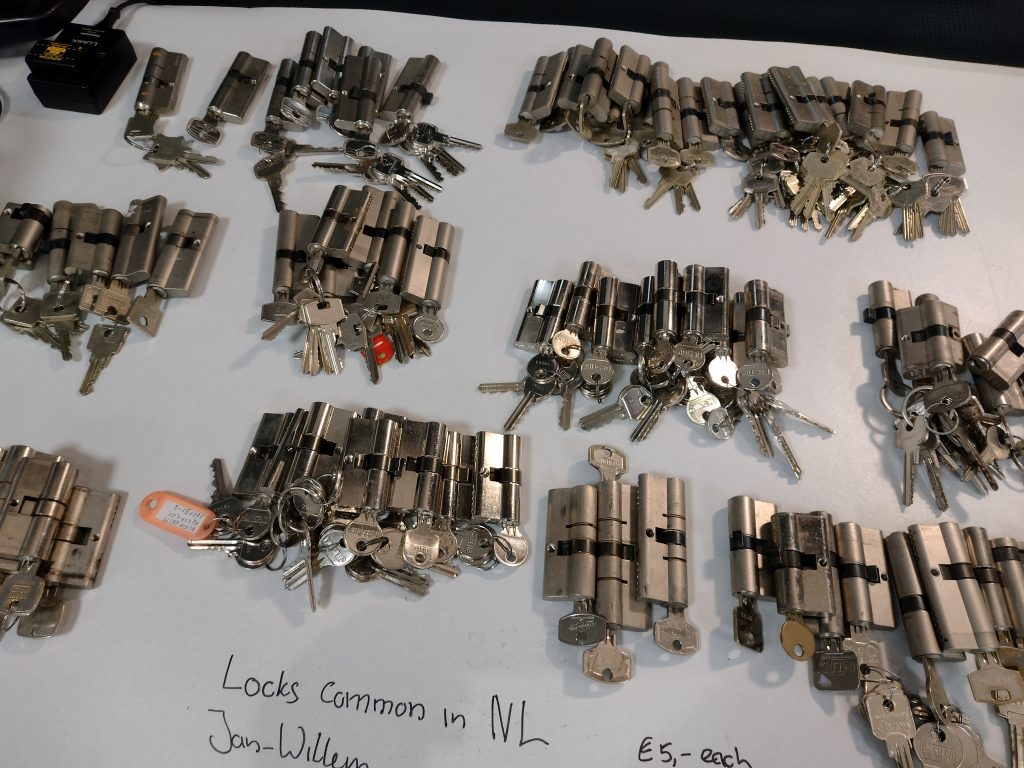
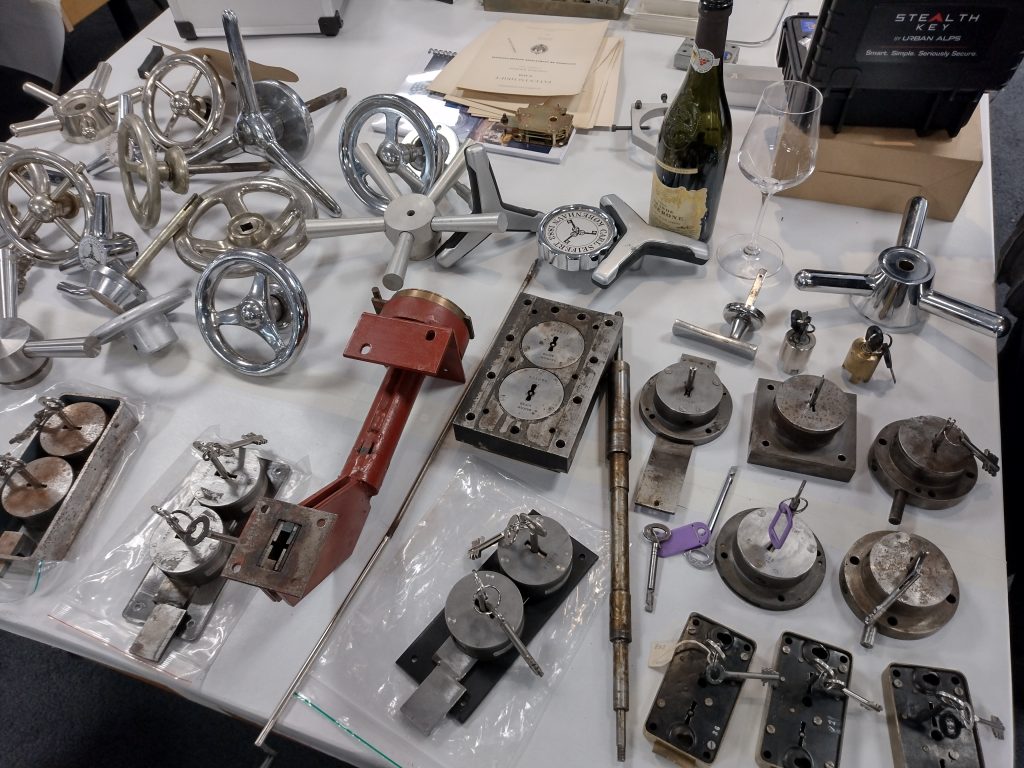
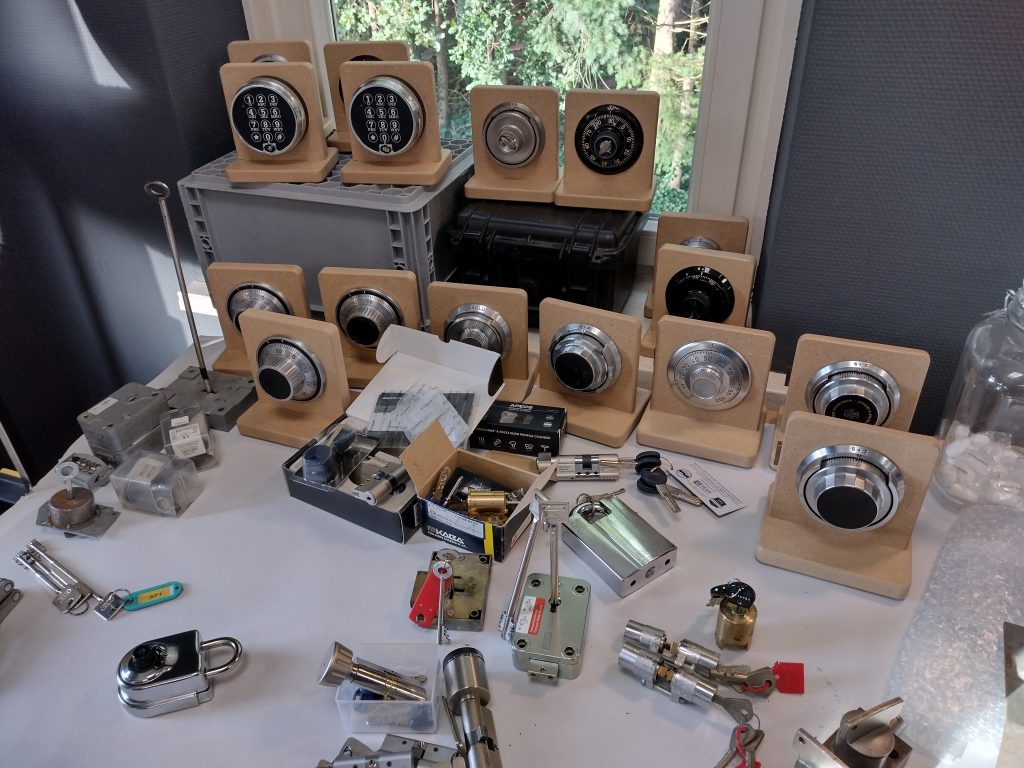
In another talk, Zeefeene shared his insights in manufacturing locks in China. From the lesson in using chopsticks to a deep dive in lock diplomacy. The highlight of the talk were the videos of lock manufacturing equipment, which showed keyway broaches to full automatic lock assembly machines. It was eye-opening as these insights are rarely shared.
After lunch and socializing, it was time to set up for the impressioning championship. Thirty-four competitors tried their skill against the Abus C83. It was nice to compete again, and it’s amazing to see how much different it was compared to the competition last year. In both finals, the majority locks opened, with several competitors opening all the locks.
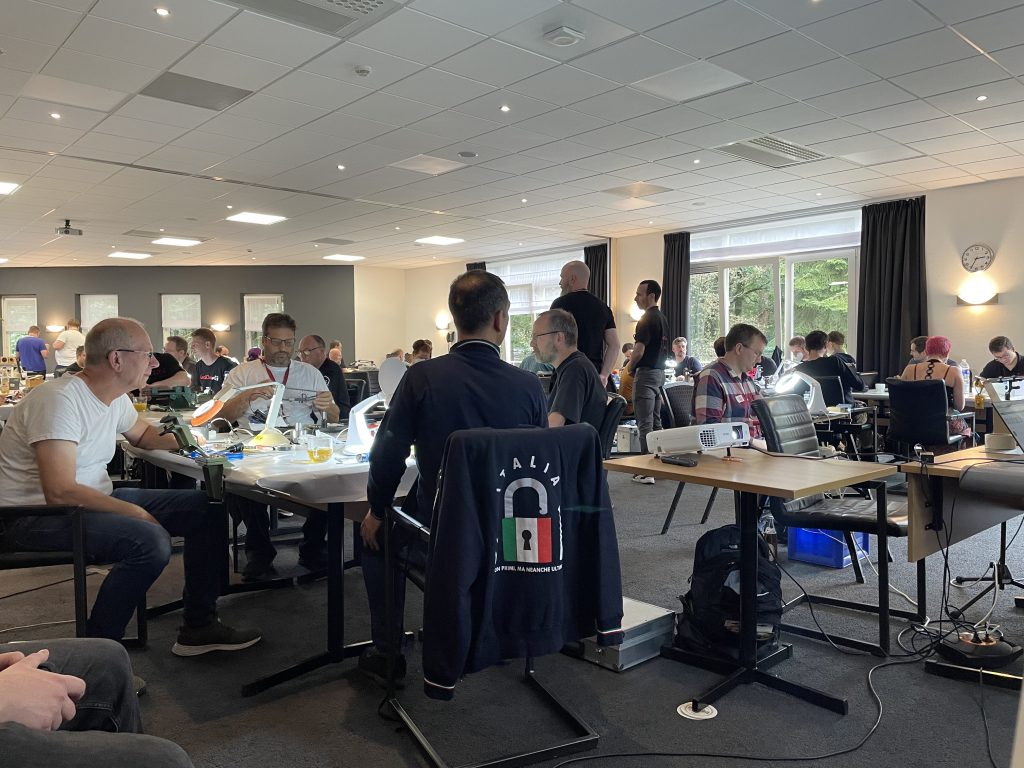
After dinner, with again a good selection of food, we had an evening of disc detainers. Idanhurja gave a talk on his Abloy disc detainer picking adventures. From figuring out Abloy classic from first principles to advanced techniques to defeat other Disc locks from the same brand. The rest of the evening was filled with workshops on the Abloy classic by Idanhurja and the DaMage Fichet F3D (Not a DD) workshop by Nitiflor. We also made a start with the disc detainer competition. I’ve selected five locks, from ‘relatively easy’ to ‘unlikely to be opened’ and Sparrows sponsored the disc detainer picks.
Saturday we started with my talk about electronic safe locks. I’ve shared my insights in how you can attack embedded systems and specifically electronic safes. The target is the Kaba-Mas X0 series locks. Starting from the X07 from ’92 and building to analyzing the electronics of the X09. I’ve shared about hardware reverse engineering, but also high-end techniques like laser fault injection used to extract the memory content of the lock. While still a lot of work has to be done, progress is made.
Lubos Cech shared stories about the early European lock industry. For example, the euro profile cylinder hasn’t been the standard forever. One manufacturer designed and patented the hole through the two lock bodies to fit a mounting screw. While this is regarded as a mistake from a security perspective, the competitors worked around the patent and came up with many innovative solutions. Including clamping the lock from the side in various ways. The stories fit quite well with the lessons learned in manufacturing shared by Zeefeene.
For the lockpicking championship, fifty-one competitors joined. We started in groups of nine and worked towards a bracketed system after the first round. Many people opened locks, and some were unlucky on the table placement. A lot of pin tumblers have been picked from the following selection: Kibb, Nemef, Mastermate, Dom Plura, Destil, Era, Basi, M&C, S^2, Zi-Ikon, and Winkhaus.
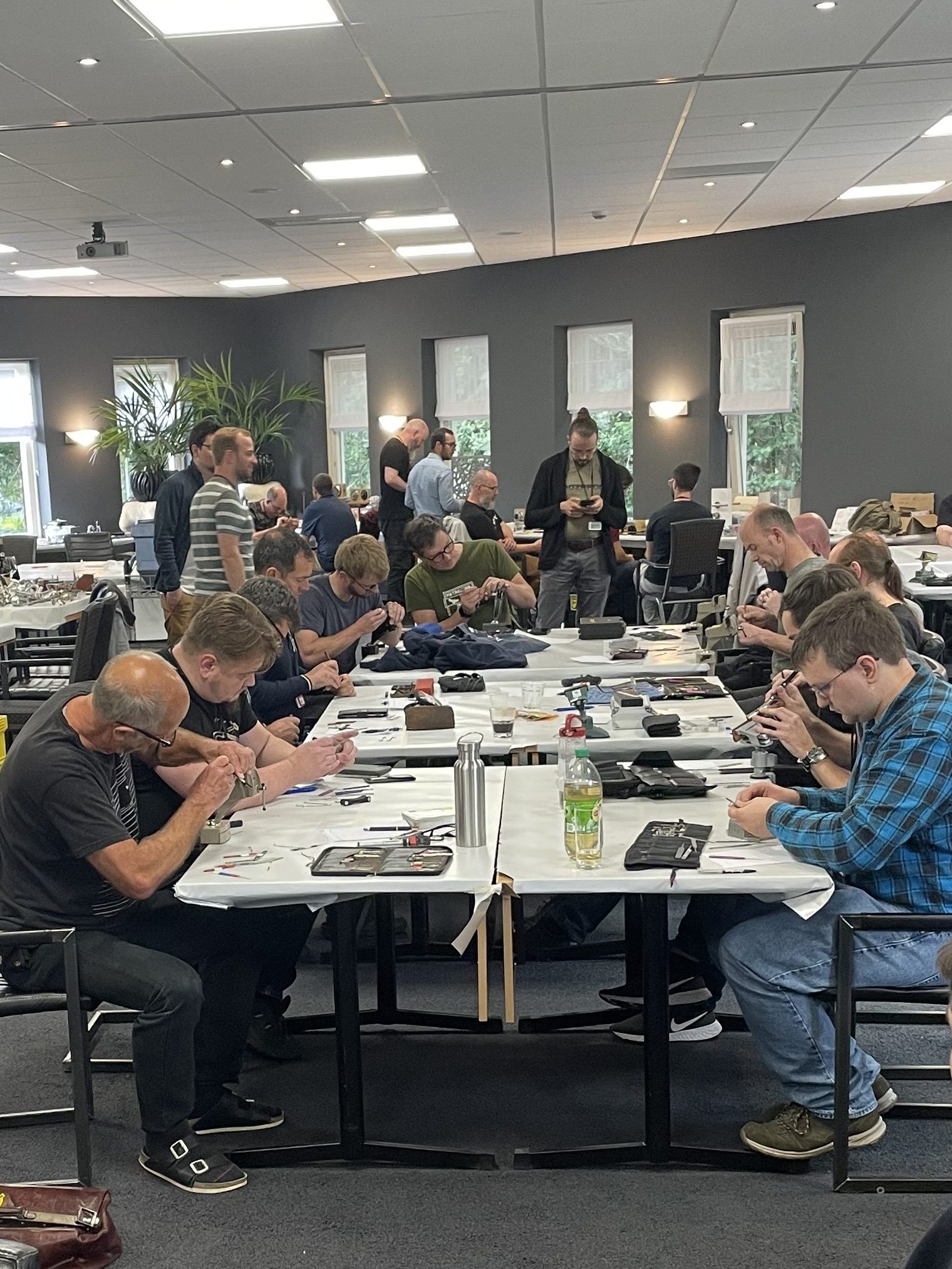
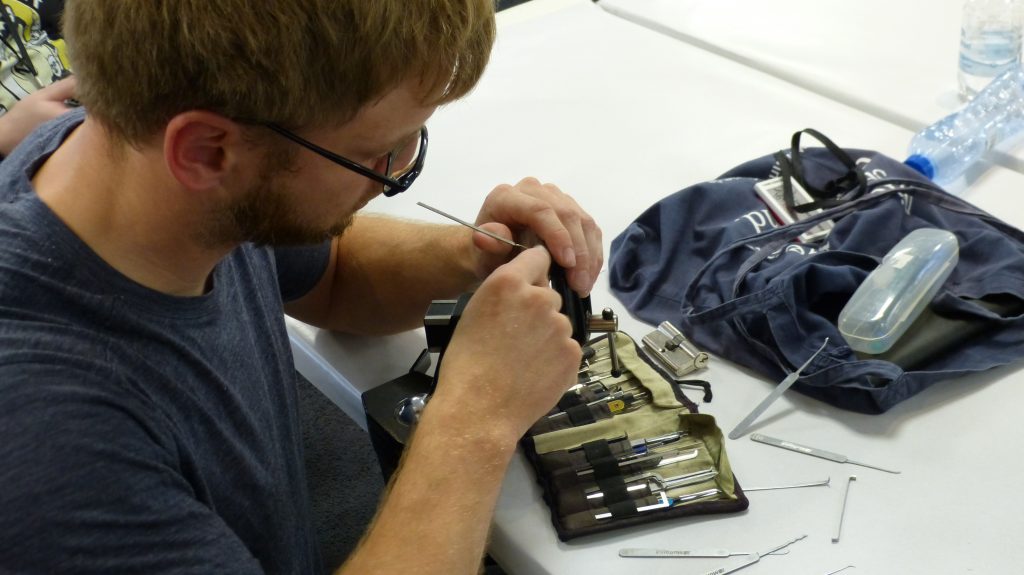
In the evening, Matt Smith (Huxleypick) ran his presentation on Physical Vulnerability Research. In which he shared the things he researched over the years and how others can get involved as well. After that, we ran had the price ceremony for the Lockpicking, Impressioning, and Toool NL competition.
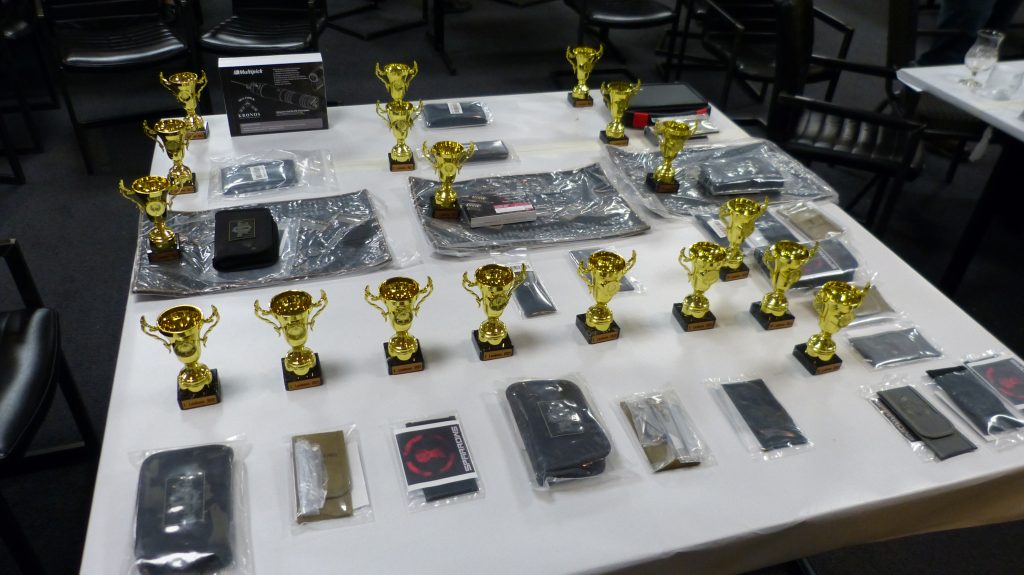
We ended the night with a panel on the new book Locksport. Walter, Jos, Matt, and Nigel shared their stories on what it’s like to write a book on the subject. Where the key point is: it’s a lot of work. A nice summer project, which ends up being several years of small improvements until there is something really called a book. This book is a great introduction to the hobby and will make Locksport more popular than ever.
On Sunday morning, a presentation and panel discussion on RFID hacking was organized by Torsten, Christian Holler and mh. It was well worth the time and certainly interesting to see how hotel cards function. Mh shared a list of the current RFID devices, for those willing to get started.
BugBlue shared how the badge works and how you can start working with shop price tag e-paper displays. It’s a great idea, and hopefully we will see more like it for other events. https://openepaperlink.de/
The final event at LockCon was the Pentathlon competition, hosted by the Italians from ParmaKey. Within about an hour, the competitors had to complete five lockpicking challenges. Pin tumbler picking, dimple picking, creating a key with impressioning, lever lock picking, and car lockpicking. For each challenge, a time limit is given and if you didn’t finish the challenge in the limit, you have to wait a couple of minutes before starting the next one. Participants shared that waiting four minutes after failing the impressioning challenge indeed felt punishing. Mostly, because everyone who passed the gate in time got to continue with the next challenges. In the closing ceremony, the prices for the disc detainer competition and Pentathlon competition were handed out. After which we cleaned up and said our goodbyes.
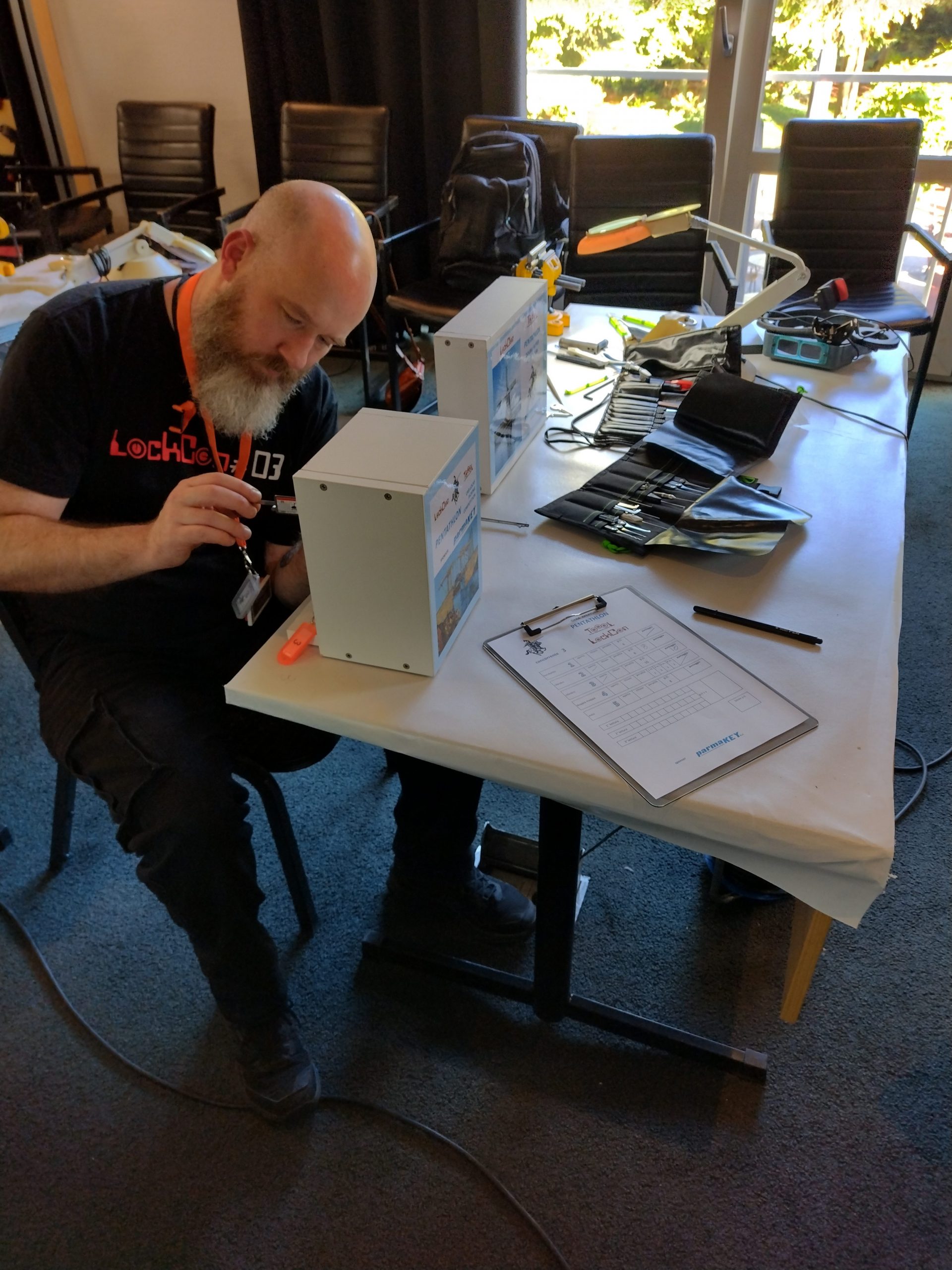
I would like to thank the people who made LockCon possible. Thanks to Sparrows, who sponsored their disc detainer lockpicks for the dd competition and a large box of goodies including various lockpicking sets. Thank you, Multipick, for sponsoring the prices for the competition, including various community lockpicking sets from Christina, Decoder, and LockNoob. As well as a ERAS disc detainer lockpick for Toool to practice with.
For as long as we work with Abus C83 in the Impressioning championships, Abus sponsors the locks and blanks for the competition. The majority of locks and blanks are used up, and the remaining will be used to teach the skill and help people new to the hobby getting started.
Thanks to Dulimex for sponsoring five Pro-Line padlocks with a Tokoz core to challenge the lockpickers with a unique challenge. The group from Italy, with ParmaKey ran the Pentathlon competition for us, and we thank them for all their effort.
Thanks to the LockCon team who made LockCon possible. Without them, it wouldn’t be possible: Jos, Holly, Chantal, Jan-Willem, and Hugo. While organizing this event was a lot of work, it was well worth it. Finally, thanks to all presenters, other organizers, and participants for joining LockCon as you made it a great event again. We hope to see you all again next year!

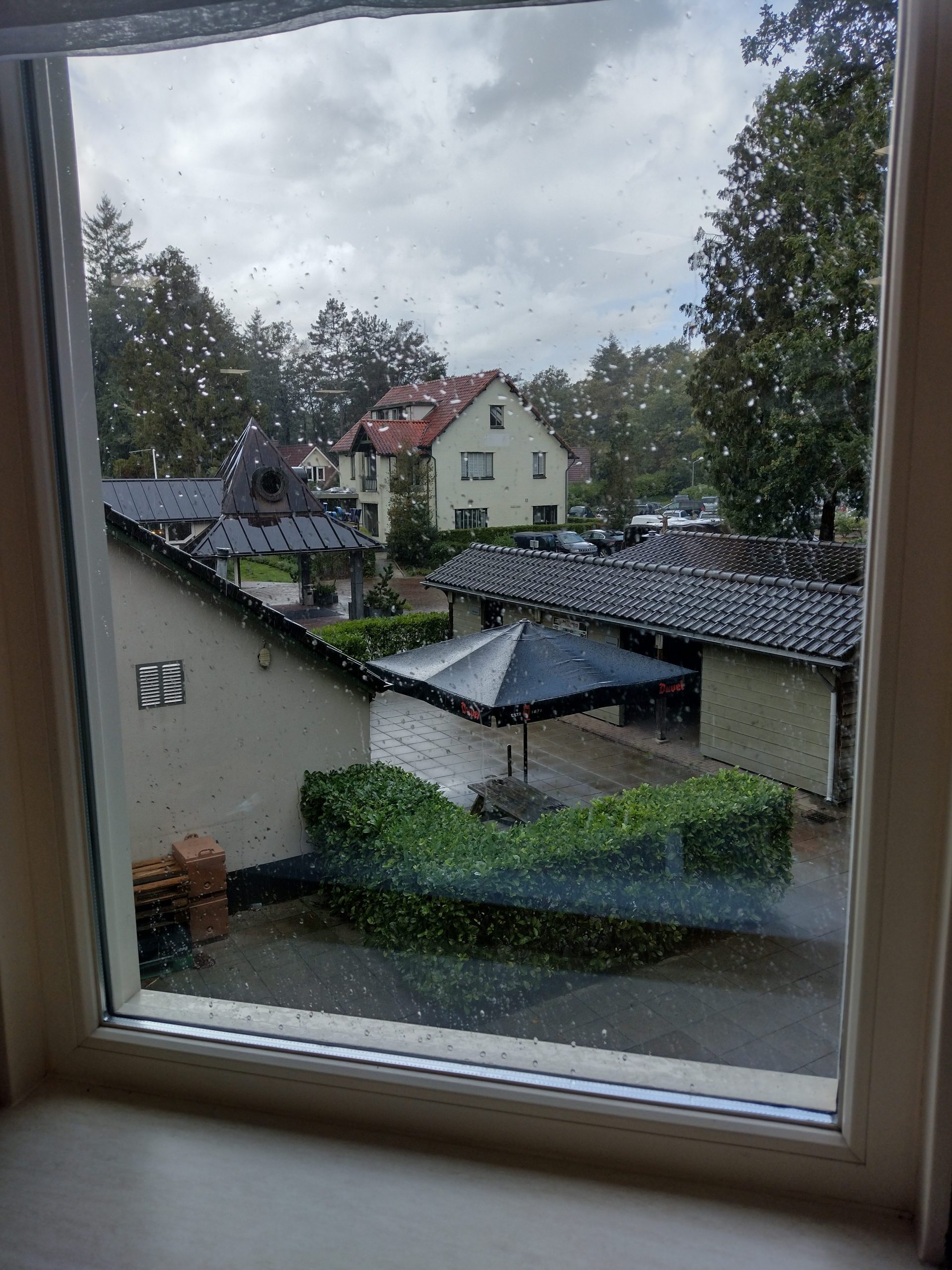
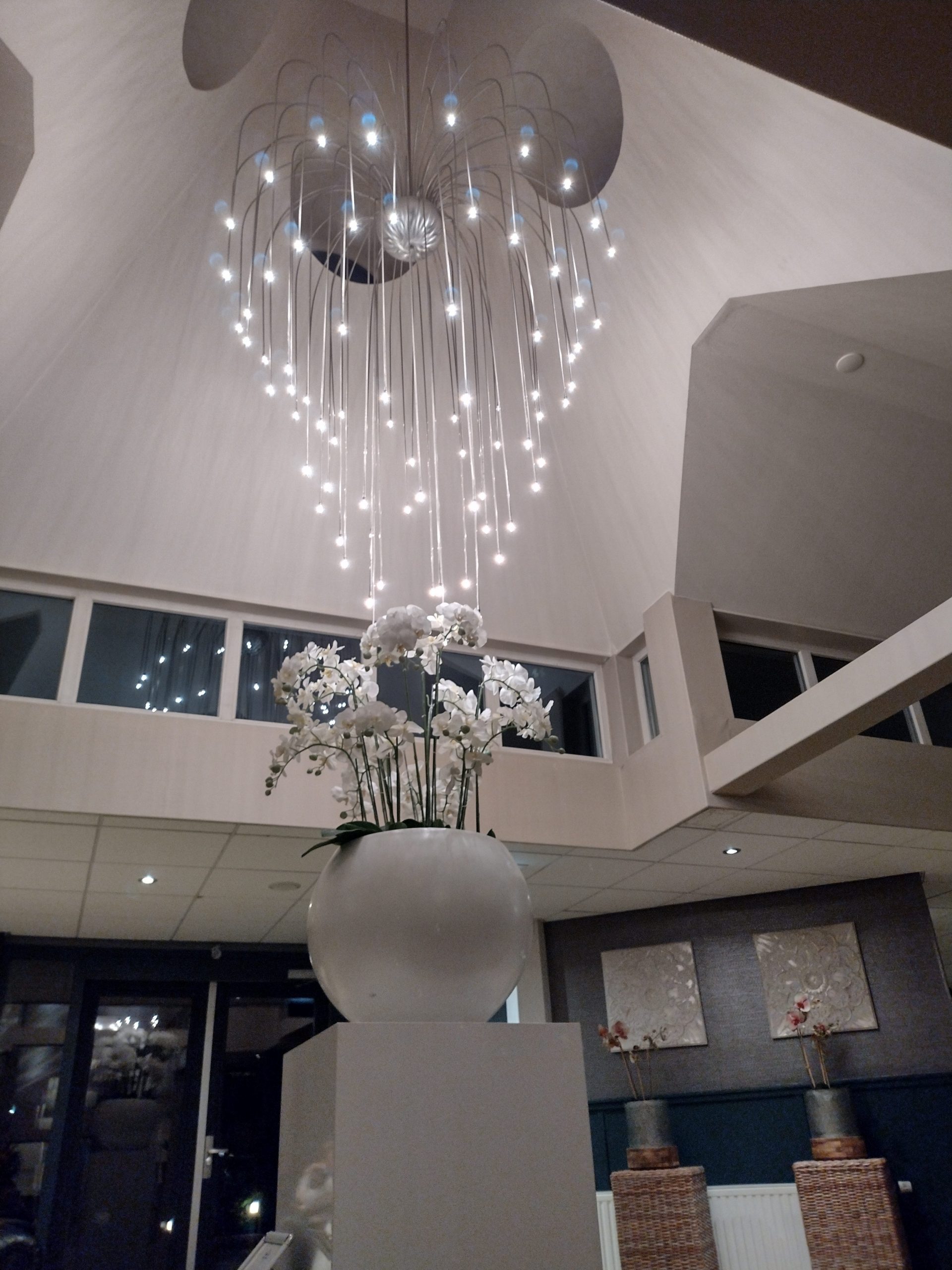
All the pictures are by Toool NL. Feel free to use the photos of locks under CCBY4.0, and for pictures with people, please ask for permission first.

